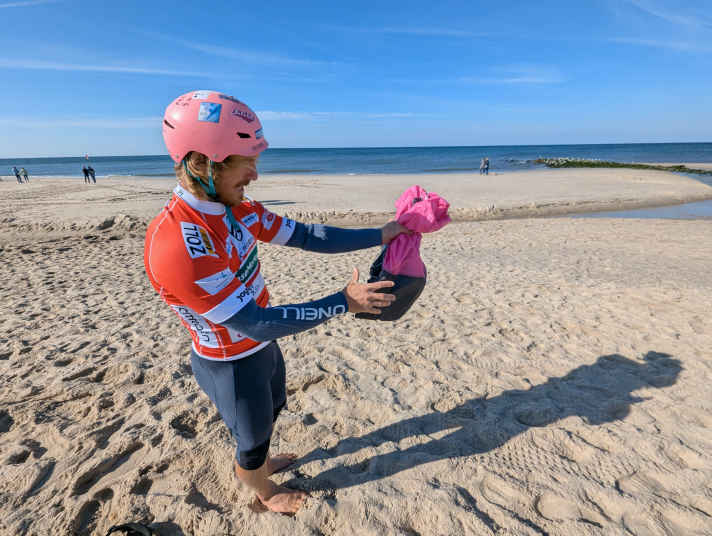





Anyone who wants to winch down with a wing knows the problem: the wing is always in the way, especially when the wind and waves are travelling in the same direction. The idea of using a parawing instead, which can be packed away, therefore seems charming. But what should you bear in mind with the material? What is the best way to start? And what are the typical failures at the beginning? Balz Müller, foil pro from the very beginning, gives you tips on how to get started.
Balz, what do you think is the advantage of a parawing over a wing?
First of all, I like the name Parawing not particularly, actually something like Pocket Wing better. Apart from that, you have to be clear: If you want to cruise back and forth on the foil, i.e. classic freeriding, then use a wing. It always stays in shape and you won't get any line tangles. The parawing or pocket wing has a particular advantage when downwinding. If you have some practice and can sit on swell waves, you can simply pack it up and enjoy the ultimate freedom. Here on the Swiss lakes, you can fly for kilometres on the foil without having to get the pocket wing out again.
How are pocket wings and parawings currently developing?
A lot is happening, of course, and the leaps in development are huge. It's all about making the Parawing more stable and less sensitive to control. New sub-disciplines are emerging all the time: racing with the Parawing, freestyle tricks and so on. But for most people, the suitability for downwinding is certainly the decisive factor.
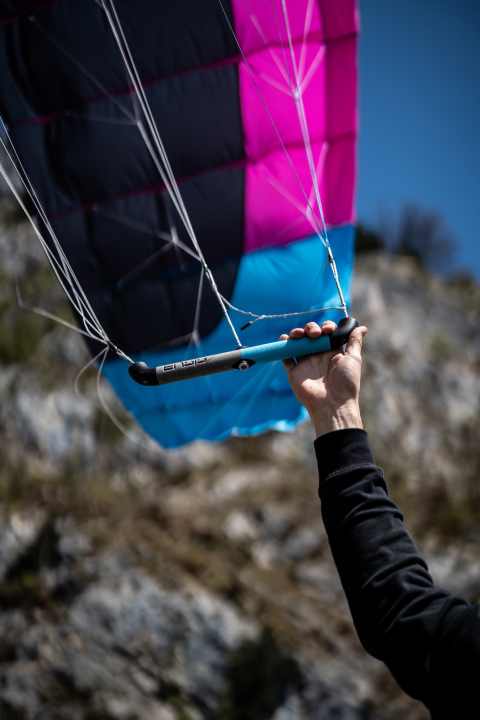
Material and conditions
Let's talk about the right equipment and the best practice conditions. What should you consider here?
You can say that you should choose roughly the same size as for wingfoiling. If you ride a 5er wing, go for a 5er parawing. Boards with more length are ideal, such as the narrow ones Midlength boards. If you want to use a classic compact wingboard, you either need more wind at the beginning or a larger parawing. Overall, the parawings also offer a wide wind range. At the beginning it helps if you start with a little more wind and of course without waves.
Do you use leashes for parawing?
I don't connect to the parawing and my experience is that you can always reach it again quickly once it has been released. However, a leash is mandatory as a connection to the board, otherwise you may lose both and then you may have a problem. Super important: Don't use a coiled board leash, use a smooth leash instead. The lines of the parawing quickly get tangled up in coiled leashes and then you have a mess (laughs).
How long does it take to learn to parawing?
If you have foiling experience, for example from pump foiling or wing foiling, it's only a matter of a few hours before you can get to grips with foiling. Jibes and tacking require a little more practice, but you can learn them quite quickly. It is important that you familiarise yourself with the parawing before your first session and take some time to launch, steer and pack it on the shore. A session on a skateboard can also be useful if you are skate-savvy. For your first session on the water, it's important that you have a bit more wind and that it's not blowing offshore, of course. Personally, I always ride with a coloured Lycra shirt and for longer downwinders I take a safety system with me, such as a waterproof smartphone.
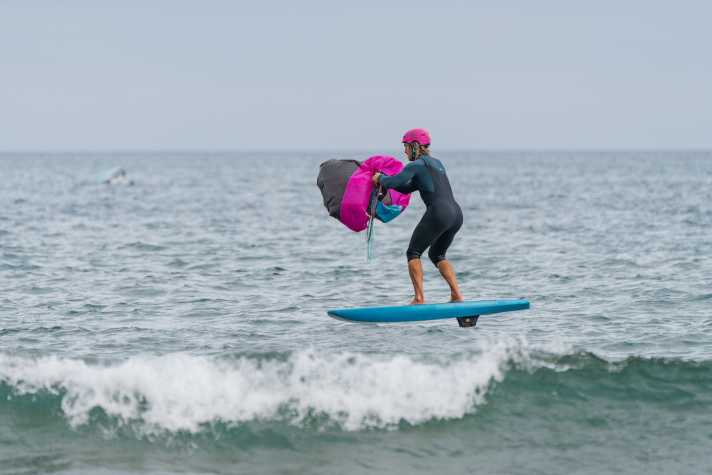
Parawingen - launching and retrieving
Let's talk about the start: How do you go about it?
As I said, smooth water and good wind are ideal. I don't just throw the wing up, but open the ears, i.e. the sides, a little before I let it go. It's important to use a bar with a colour code so you always know where the top is. In my case, the A-lines are attached to the coloured end. The A-lines are the ones that are attached to the leading edge. The main pull is on these lines and therefore the coloured side of the bar must always be on top.
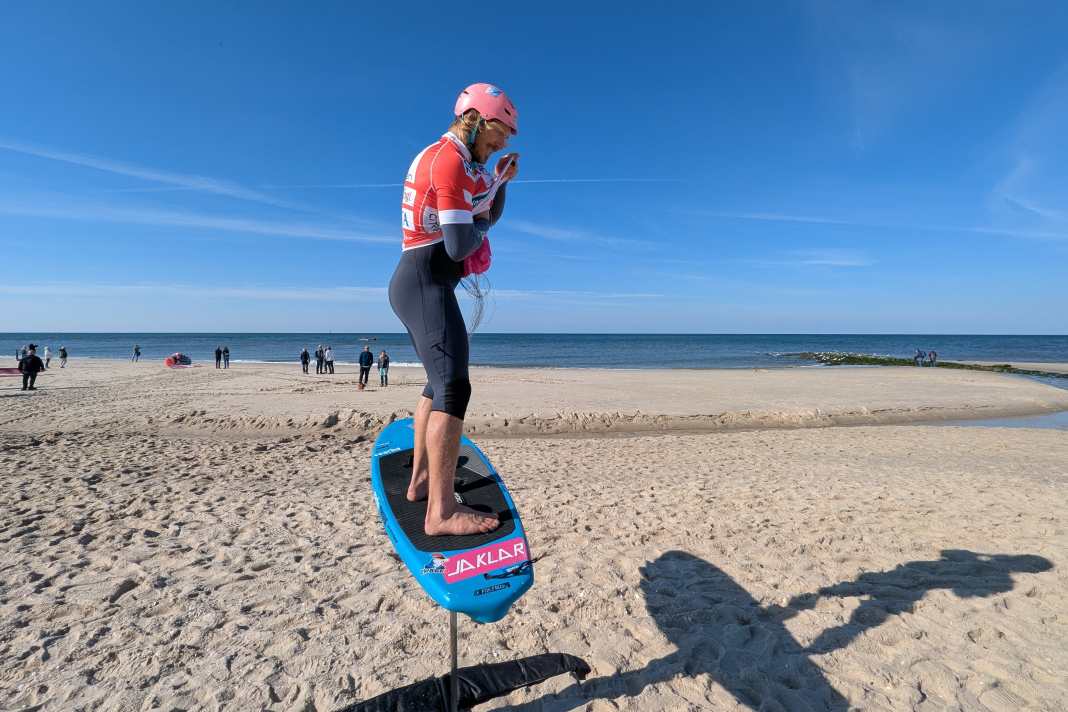





The great fear of all those who want to learn parawing is that the lines will get completely tangled. A justified concern?
Sure, it can happen, but it happens far less often than you might think if you follow a few basic rules. The important thing is always: don't rush, don't panic - if you have a line salad, it's usually just a spin with the bar. Especially in the waves, of course, it can happen if you get washed up. When winching downwind, without breaking waves, it is rather rare.
The point of the thing is to pack the wing away on the shaft. How do you proceed here?
Because the flights on the foil are usually shorter at the beginning, you should initially only keep it packed up in your hand so that you can launch it again quickly. If the rides get longer, you can also pack it completely into a bag and fly for kilometres.
Can you explain how you wrap the parawing without producing linen salad?
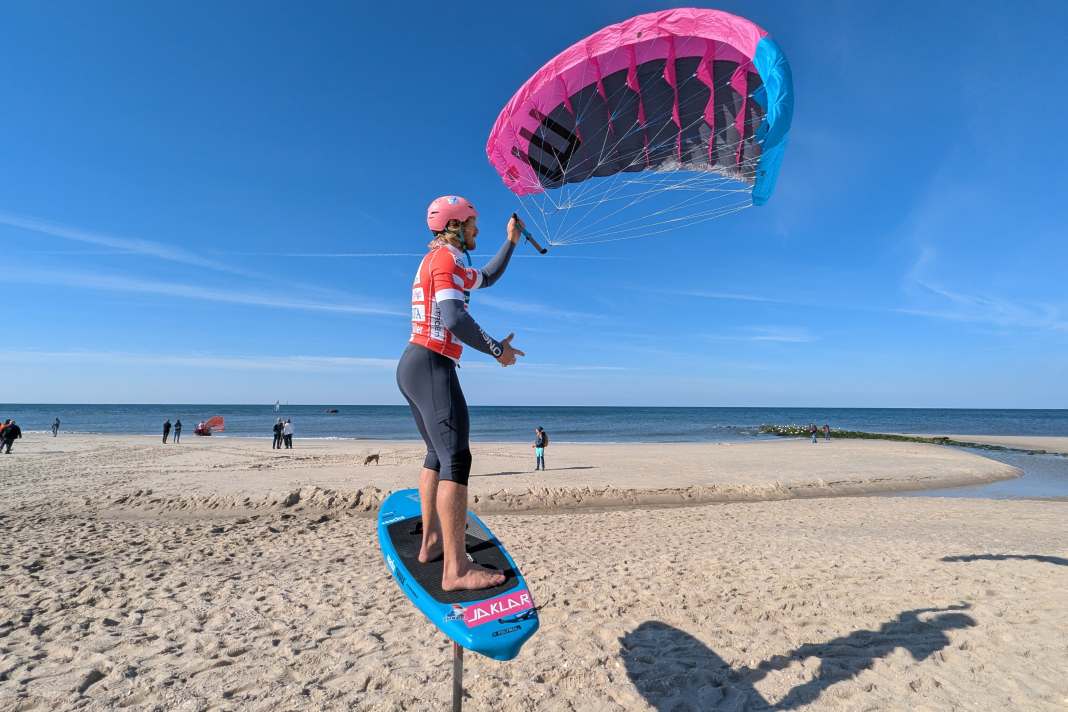





Firstly, I fold the top of the bar, to which the A-lines are attached, to leeward - the parawing then smears. I grab the lines with my free hand and pull the lines through my hand until I reach the ears. In the beginning, you can continue flying like this and then launch the pocket wing again quickly. As the flights get longer, I fold the ears inwards, fold the centre of the leading edge in and place the bar on the bundle. Important: Always keep the coloured side with the A-lines up. If you want to pack the parawing away properly, it is easiest to wear a lycra, under which you can then stuff the parawing. Then the true freedom of foiling begins. There are already proper bags in which you can stow the pocket wing, there will be a lot more to come in the next few years.
How do you pack the wing at the end of a session?
Similar to the water. I bundle the lines with one hand and lay the bar in the centre of the parawing with the A-lines facing upwards. Then I fold the sides and leading edge in towards the centre. The lines are now inside the parawing, so nothing can get tangled. Under no circumstances should you wrap the lines around the pocket wing, as they are sure to get tangled.
